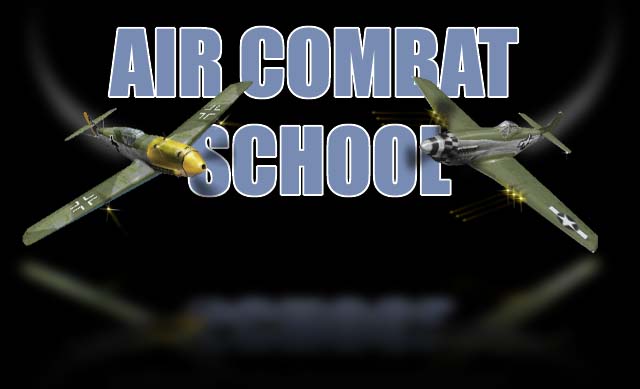
European Air War

Air Combat School
One vs. Two tactics
Although one-versus-two is certainly not an attractive scenario, there are times when you should initiate an engagement when outnumbered, as well as those when the choice is not left up to you. This section will deal with the former by discussing when it is appropriate to engage a section alone, as well as some of the offensive maneuvering choices available to pursue such an engagement. Following that, you will be presented with some defensive and escape tactics that are appropriate when you've been unwittingly bounced, or when your initial attack is unsuccessful and you've been forced to go defensive.
Because you begin any single engagement against a section with an inherent disadvantage in both offensive firepower and defensive staying power, you must maximize all other factors before even considering such an attack. Primary amongst these is the element of surprise. Stalk your intended target carefully and attain sufficient separation and energy advantage to extend and escape should you be detected before you have committed to the attack. Attack only from position with offensive advantage, such as high in the section's tail or out of the sun. From such position, you can dive and close quickly, and attack and eliminate one opponent to reduce the situation to one-versus-one.
The attack should be planned so you can threaten each opponent in turn. Ideally, you would like to be able to attack the rear aircraft with complete surprise and use your energy advantage to continue through to the lead aircraft. If the trailing aircraft is operating slightly above the leader, a high diving approach can let you shift fire between the two aircraft quickly, once you are in range. If the trailing aircraft is operating slightly lower than the leader, you can dive behind the formation and pull up into a shallow but high speed climb from their low six position, moving your fire from the low trailer to the higher lead aircraft.
Following the initial attack, you should assess the situation and decide whether to continue attack on the leader or break away. If the attack was successful, you may choose to engage the remaining opponent one-versus-one. Even if you were not successful, if both opponents are forced into defensive and you're still in favorable position, you may choose to stay engaged. However, unless your fighter has a tremendous performance advantage, prolonged combat with a section of well-coordinated opponents is not recommended. You must be particularly aggressive in an attempt to reduce the odds quickly to a more manageable one-versus-one situation.
When forced on defensive against a section of aircraft, try to keep track of both opponents. To avoid being bracketed, keep them both on the same side of your aircraft. Try to maintain high energy state and avoid any maneuver that would leave you vulnerable to the second aircraft. When caught in this situation, watch for any escape opportunities, your objective should be to disengage and live to fight another day.
This material was included in the original 1998 release of European Air War by Microprose.
